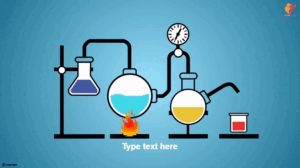MELTING AND BOILING

Melting and boiling are two basic thermodynamic concepts that are essential for understanding how matter reacts when subjected to different temperatures. Although these principles may appear difficult, they are actually extremely simple to grasp once broken down.
What exactly is melting?
Melting is the process of converting a solid substance into a liquid. When a substance is heated to a given temperature, known as the melting point, this happens. The melting point is the temperature at which a substance’s solid and liquid phases are in equilibrium, which means that the rate of solidification equals the rate of melting.
The kinetic energy of a solid’s particles increases as it is heated. The particles begin to vibrate more and more as the temperature rises, until they are able to overcome the forces binding them together in a solid form. When the forces are overcome, the particles become more free to move and take on a liquid shape.
Ice, for example, is a solid form of water. When ice is heated, it finally reaches its melting point of 0°C (32°F). The ice will begin to melt and change into liquid water at this stage.
What exactly is Boiling?
Boiling is the process of converting a liquid substance to a gaseous state. When a substance is heated to a given temperature, known as the boiling point, something happens. The boiling point of a liquid is the temperature at which its vapor pressure matches the air pressure surrounding it.
When a liquid is heated, the kinetic energy of its particles increases, forcing them to move faster and farther apart. As the temperature rises, the particles obtain enough energy to escape the liquid’s surface and transform into a gas.
Water, for example, boils at 100°C (212°F) at sea level. This means that if you heat a pot of water on the stove, it will eventually boil and transform into steam, which is the gaseous form of water.
Important Takeaways
Melting is the process of converting a solid substance into a liquid.
Boiling is the process of converting a liquid substance to a gaseous state.
When a substance is heated to a specified temperature known as the melting point or boiling point, it melts or boils.
The melting point of a substance is the temperature at which its solid and liquid phases are in equilibrium, and the boiling point is the temperature at which a liquid’s vapor pressure matches the atmospheric pressure surrounding it.
Understanding these ideas is critical for understanding how matter behaves at different temperatures, as well as for a range of practical applications such as cooking, industrial processes, and climate science.



